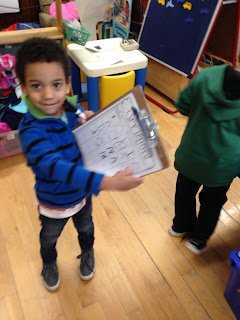http://www.eec.state.ma.us/docs1/curriculum/20030401_preschool_early_learning_guidelines.pdf
http://www.naeyc.org/files/naeyc/file/positions/WWSSLearningToReadAndWriteEnglish.pdf
MA.1. With guidance and support, demonstrate understanding of the organization and basic features of printed and written text: books, words, letters, and the alphabet.
MA.1.a. Handle books respectfully and appropriately, holding them right-side-up and turning pages one at a time from front to back.
MA.1.d. Recognize and name some uppercase letters of the alphabet and the lowercase letters in one’s own name.MA.2. With guidance and support, demonstrate understanding of spoken words, syllables, and sounds (phonemes).
MA.2.a. With guidance and support, recognize and produce rhyming words (e.g., identify words that rhyme with /cat/ such as /bat/ and /sat/).
MA.2.b. With guidance and support, segment words in a simple sentence by clapping and naming the number of words in the sentence.
MA.2.c. Identify the initial sound of a spoken word and, with guidance and support, generate several other words that have the same initial sound.














No comments:
Post a Comment